Let's Party |
|||||||||||||||||||
 |
 |
||||||||||||||||||
Crocheted slippers with multi-coloured pattern, fringes and pompoms. Size 35 to 43 Piece is crocheted in DROPS Nepal.
DROPS 189-35 |
|||||||||||||||||||
|
INFORMATION FOR PATTERN: COLOUR PATTERN: See diagrams A.1 to A.3. Work diagrams in double crochets, i.e. 1 square in diagram = 1 double crochet. COLOUR CHANGE: When changing colour work as follows: Work last double crochet with first colour but wait with last pull through, switch to next colour and work last pull through with the new colour, then work next double crochet. When working with two colours place strands for the colour not worked over stitches from previous round, work around the strands so that they are hidden inside the stitches, the strand will then follow in the round. CROCHET INFO: Replace first double crochet on round with 1 chain stitch, finish round with 1 slip stitch in first chain stitch When working double crochets back and forth, replace first double crochet on row with 1 chain stitch, finish row with 1 double crochet in chain stitch from beginning of previous row. DECREASE TIP: Work 1 double crochet but wait with last pull through (= 2 loops on hook), then work next double crochet but on last pull through, pull thread through all 3 loops on hook = 1 double crochet decreased. ---------------------------------------------------------- SLIPPER: Piece is worked in the round from toe and back to instep, then work back and forth to mid back on heel. Work 4 chain stitches on hook size 3.5 mm with light beige and form 1 ring with 1 slip stitch in first chain stitch. Then work as explained in the different sizes - read CROCHET INFO and REMEMBER THE CROCHET TENSION: 35/37: ROUND 1: Work 6 double crochets in ring. ROUND 2: Work 2 double crochets in every double crochet = 12 double crochets. ROUND 3: Work 1 double crochet in every double crochet. ROUND 4: * 1 double crochet in first double crochet, 2 double crochets in next double crochet *, repeat from *-* 6 times in total = 18 double crochets. ROUND 5: * 1 double crochet in each of the first/next 2 double crochets, 2 double crochets in next double crochet *, repeat from *-* 6 times in total = 24 double crochets. ROUND 6: Read COLOUR CHANGE and work A.1 with 1 double crochet in every double crochet (= 8 repetitions of 3 stitches). ROUND 7: Work 2nd round in A.1. At the end of round there is 32 double crochets. Switch to light beige. ROUND 8: Work 1 double crochet in every stitch. ROUND 9: * 1 double crochet in each of the first/next 7 double crochets, 2 double crochets in next double crochet *, repeat from *-* 4 times in total = 36 double crochets. Increases are now done. ROUND 10: Work 1 double crochet in every double crochet. ROUNDS 11-12: Work A.2 with 1 double crochet in every double crochet (= 12 repetitions of 3 stitches). Switch to light beige when A.2 has been worked. ROUNDS 13-15: Work 1 double crochet in every double crochet with light beige. ROUNDS 16-18: Work A.3 with 1 double crochet in every double crochet (= 12 repetitions of 3 stitches). then work back and forth as explained below ALL SIZES. 38/40: ROUND 1: Work 6 double crochets in ring. ROUND 2: Work 2 double crochets in every double crochet = 12 double crochets. ROUND 3: Work 1 double crochet in every double crochet. ROUND 4: * 1 double crochet in first double crochet, 2 double crochets in next double crochet *, repeat from *-* 6 times in total = 18 double crochets. ROUND 5: Work 1 double crochet in every double crochet. ROUND 6: * 1 double crochet in each of the first/next 2 double crochets, 2 double crochets in next double crochet *, repeat from *-* 6 times in total = 24 double crochets. ROUND 7: Work 1 double crochet in every double crochet. ROUND 8: Read COLOUR CHANGE and work A.1 with 1 double crochet in every double crochet (= 8 repetitions of 3 stitches). ROUND 9: Work 2nd round in A.1. At the end of round there is 32 double crochets. Switch to light beige. ROUND 10: Work 1 double crochet in every stitch. ROUND 11: * 1 double crochet in each of the first/next 7 double crochets, 2 double crochets in next double crochet *, repeat from *-* 4 times in total = 36 double crochets. ROUND 12: Work 1 double crochet in every double crochet. ROUND 13: * 1 double crochet in each of the first/next 5 double crochets, 2 double crochets in next double crochet *, repeat from *-* 6 times in total = 42 double crochets. Increases are now done. ROUNDS 14-15: Work A.2 with 1 double crochet in every double crochet (= 14 repetitions of 3 stitches). Switch to light beige when A.2 has been worked. ROUNDS 16-19: Work 1 double crochet in every double crochet with light beige. ROUNDS 20-22: Work A.3 with 1 double crochet in every double crochet (= 14 repetitions of 3 stitches). then work back and forth as explained below ALL SIZES. 41/43: ROUND 1: Work 5 double crochets in ring. ROUND 2: Work 2 double crochets in every double crochet = 10 double crochets. ROUND 3: Work 1 double crochet in every double crochet. ROUND 4: * 1 double crochet in first double crochet, 2 double crochets in next double crochet *, repeat from *-* 5 times in total = 15 double crochets. ROUND 5: Work 1 double crochet in every double crochet. ROUND 6: * 1 double crochet in each of the first/next 2 double crochets, 2 double crochets in next double crochet *, repeat from *-* 5 times in total = 20 double crochets. ROUND 7: Work 1 double crochet in every double crochet, but work 2 double crochets in last double crochet on round = 21 double crochets. ROUND 8: Read COLOUR CHANGE and work A.1 with 1 double crochet in every double crochet (= 7 repetitions of 3 stitches). ROUND 9: Work 2nd round in A.1. At the end of round there is 28 double crochets. Switch to light beige. ROUND 10: Work 1 double crochet in every stitch. ROUND 11: * 1 double crochet in each of the first/next 6 double crochets, 2 double crochets in next double crochet *, repeat from *-* 4 times in total = 32 double crochets. ROUND 12: Work 1 double crochet in every double crochet. ROUND 13: * 1 double crochet in each of the first/next 3 double crochets, 2 double crochets in next double crochet *, repeat from *-* 8 times in total = 40 double crochets. ROUND 14: Work 1 double crochet in every double crochet. ROUND 15: * 1 double crochet in each of the first/next 7 double crochets, 2 double crochets in next double crochet *, repeat from *-* 5 times in total = 45 double crochets. Increases are now done. ROUNDS 16-17: Work A.2 with 1 double crochet in every double crochet (= 15 repetitions of 3 stitches). Switch to light beige when A.2 has been worked. ROUNDS 18-23: Work 1 double crochet in every double crochet with light beige. ROUNDS 24-26: Work A.3 with 1 double crochet in every double crochet (= 15 repetitions of 3 stitches). then work back and forth as explained below ALL SIZES. ALL SIZES: There are now 36-42-45 double crochets on round and piece measures approx. 9-11-13 cm. If the piece measures less than this, work in the round with coral and 1 double crochet in every double crochet until correct measurements. Beginning of round = mid under foot. Fasten off. Now work double crochets back and forth with light beige over the first 12-15-16 double crochets and last 12-15-16 double crochets on round (i.e. work over 24-30-32 double crochets in total and do not work over the remaining 12-12-13 middle double crochets on top of foot) - remember CROCHET INFO. When slipper measures 20-22-25 cm (i.e. approx. 11-11-12 cm from where it is divided), insert 1 marker in the middle of row (between the 24-30-32 stitches). On next row decrease 1 double crochet on each side of marker, i.e. begin 2 stitches before marker and work the next 4 double crochets together 2 by 2 – READ DECREASE TIP (= 2 double crochets decreased). Work 1 row without decrease. Repeat decrease on next row (= 2 double crochets decreased) = 20-26-28 double crochets on row. Work 1 row without decrease, place slipper double and work together mid back with a row of slip stitches through both layers. Slipper measures approx. 22-24-27 cm from toe to heel. Fasten off. EDGE: Work a chain of 25 chain stitches on hook size 3.5 mm with coral, then work 1 double crochet in first double crochet after it was worked together mid back on slipper (without cutting the yarn after chain stitch row), then work around the opening on slipper as follows: * 1 chain stitch, skip approx. ½ cm, 1 double crochet in next stitch *, repeat from *-* the entire round, but finish round with 1 double crochet in last stitch before it was worked together mid back, then work 25 chain stitches again. Fasten off. Tie a little bow mid back with chain stitch rows. FRINGES: Fasten 6 small fringes mid on top of slipper in the last row with light beige before A.2. 1 fringe = cut 2 strands goldenrod of 6 cm each. Place the strand together and then double, pull loop around a double crochet on slipper and pull ends through loop, tighten. Cut fringes to desired length. There are 2 double crochets between each fringe. POMPOMS: Make 2 mini pompoms with coral and 3 mini pompoms with aqua blue. Each pompom measures approx. 2 cm in diameter. Fasten pompoms on a row in the middle of the light beige section before A.3. Work the other slipper the same way. |
|||||||||||||||||||
Diagram explanations |
|||||||||||||||||||
|
|||||||||||||||||||
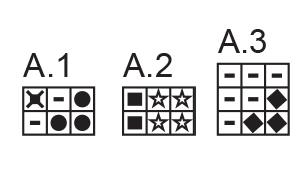
|
|||||||||||||||||||
|
Have you made this or any other of our designs? Tag your pictures in social media with #dropsdesign so we can see them! Do you need help with this pattern?You'll find tutorial videos, a Comments/Questions area and more by visiting the pattern on garnstudio.com. © 1982-2024 DROPS Design A/S. We reserve all rights. This document, including all its sub-sections, has copyrights. Read more about what you can do with our patterns at the bottom of each pattern on our site. |
|||||||||||||||||||








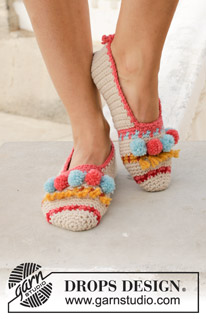










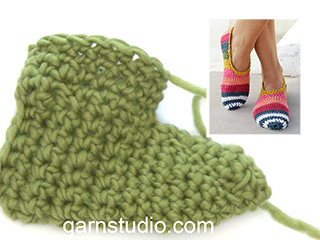
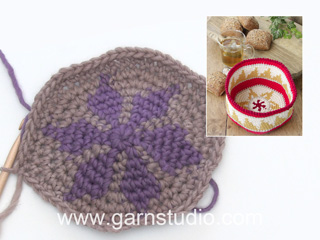


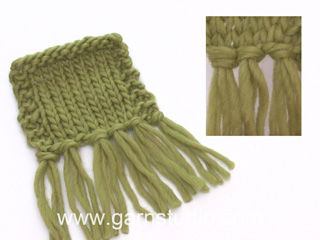

















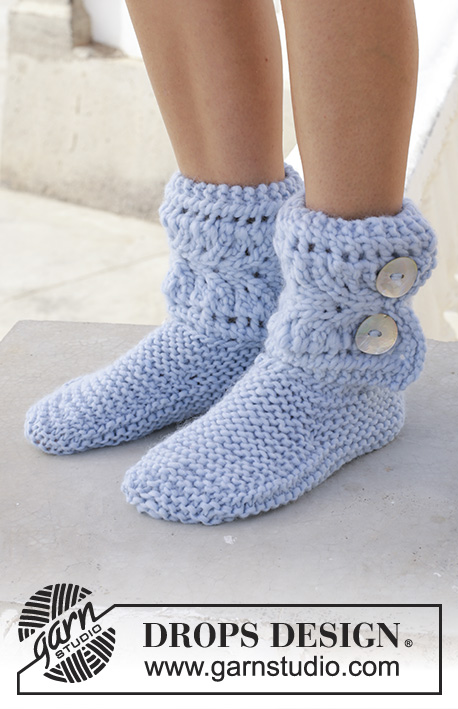
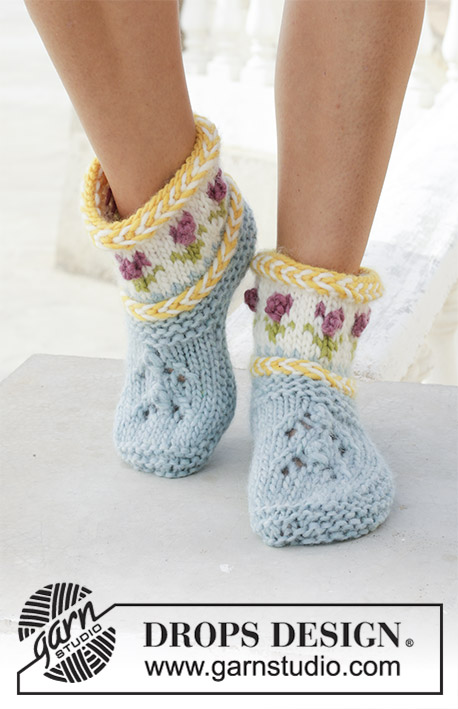






Comments / Questions (2)
Hej Jag ser inte rapport A1, eller rättare sagt jag ser inga rapporter i mönstret. Var ser jag dom? MVH Annelie
05.10.2021 - 11:07DROPS Design answered:
Hej Annelie. Diagram A.1, A.2 och A.3 hittar du längst ner på mönstret. Testa att uppdatera sidan (ev. prova en annan webläsare) om du inte kan se dem. Mvh DROPS Design
05.10.2021 - 13:55Hallo, ik heb een vraagje. Ik gebruik haaknaald 3 voor de goede stekenverhouding (18 st. 20 t voor 10 x 10 cm) maar als ik aan de eerste kleurenwissel begin in toer 8 heb ik een stukje dat net over de eerste twee tenen past. Op de foto is de kleurwissel een heel stuk verder. Wat gaat er mis? Alvast bedankt! Groetjes Joanita
14.08.2018 - 12:07DROPS Design answered:
Dag Joanita, Volgens mij klopt dat wel hoor. Bij de kleinste maat wissel je al bij toer 6 en 20 toeren is 10 cm in de hoogte. Dus op ongeveer 4 cm wissel je al van kleur.
23.08.2018 - 20:39